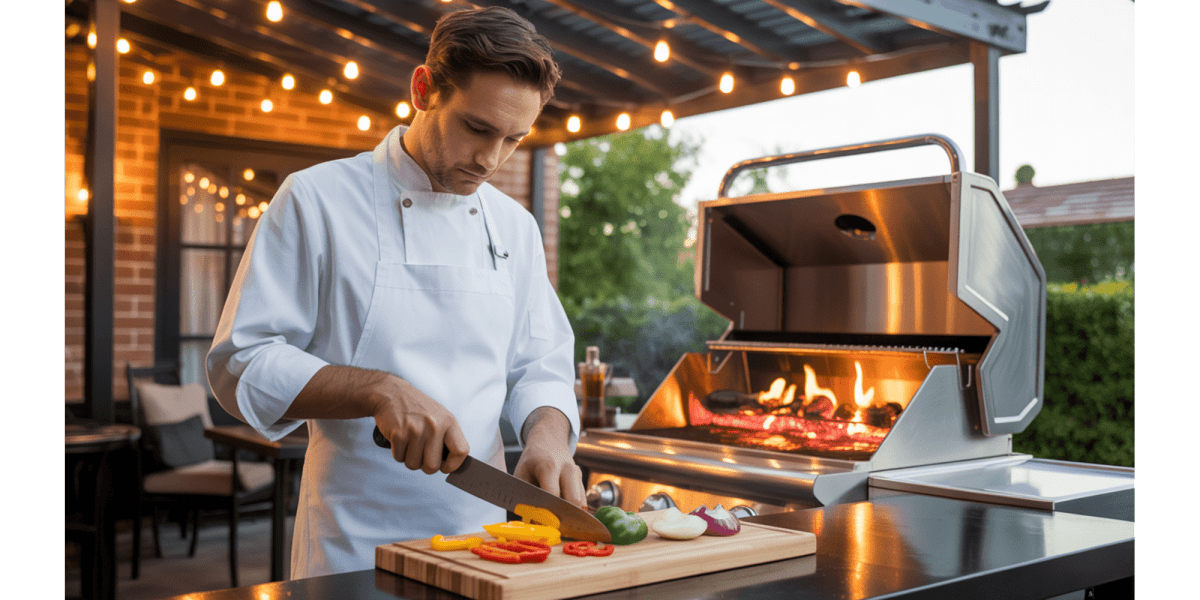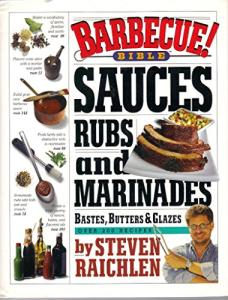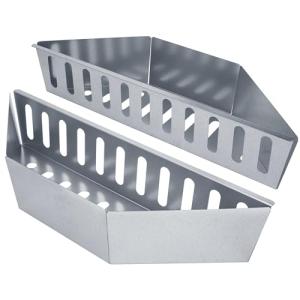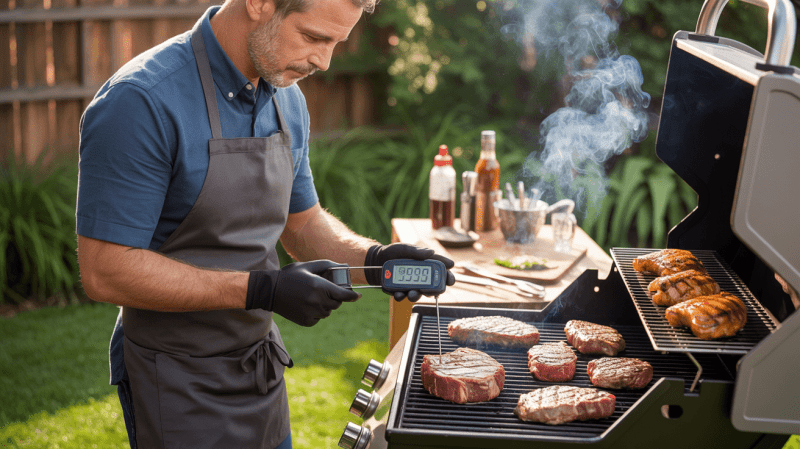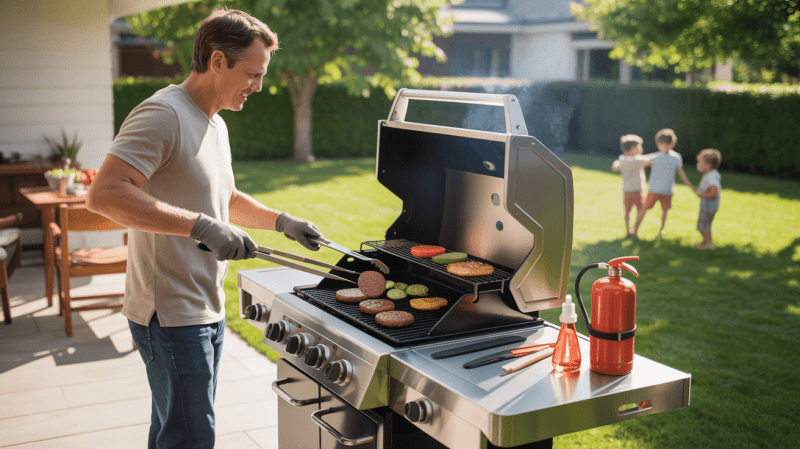The Ultimate Guide to Grilling Vegetables:

Grilling vegetables is an art that brings out their natural flavors. It adds a smoky twist to your meals. With the right techniques and tools, you can elevate your outdoor cooking experience.
Whether you're a seasoned grill master or just starting out, our guide will walk you through the essentials of grilling vegetables. From preparing the perfect grill to achieving those beautiful char marks, we'll cover it all.
Key Takeaways
- Learn the best vegetables for grilling
- Discover essential grilling tools
- Master various grilling techniques
- Understand how to prepare vegetables for grilling
- Tips for achieving perfect grill marks
Why Grilled Vegetables Deserve a Spot on Your Plate
Grilling vegetables brings out their natural flavors in a unique and delicious way. It's not just about adding a smoky taste. It's about turning the vegetables into a culinary masterpiece.
Flavor Transformation Through Grilling
Grilling vegetables caramelizes their sugars, boosting their flavor. This method creates a rich taste that's hard to get with other cooking ways. For example, grilling asparagus or bell peppers makes them sweet and perfect as a side dish.
Nutritional Benefits of Grilled Vegetables
Grilled vegetables keep most of their nutrients, making them a healthy choice. They are full of vitamins, minerals, and antioxidants. A study showed that grilling vegetables better preserves their nutritional value than boiling or frying.
Year-Round Versatility
Grilled vegetables are not just for summer BBQs; they're great all year. In winter, grilled root vegetables like carrots and beets add warmth to your meals. Here's a table of seasonal vegetables perfect for grilling:
| Season | Vegetables |
|---|---|
| Spring | Asparagus, Bell Peppers |
| Summer | Zucchini, Corn, Tomatoes |
| Fall/Winter | Carrots, Beets, Brussels Sprouts |
As
"The discovery of a new dish does more for human happiness than the discovery of a new star." - Jean Anthelme Brillat-Savarin
Grilling vegetables is an art that lets us enjoy their natural flavors. We can also try different seasonings and techniques.
Essential Tools for Grilling Vegetables
https://www.youtube.com/watch?v=bYRPYBjcLaY
To get perfectly grilled veggies, you need the right tools. Grilling veggies can be fun and rewarding. But, without the right gear, it can get frustrating.
Grill Types: Gas vs. Charcoal vs. Electric
The type of grill affects your veggie grilling results. Gas grills are easy to use and control the heat well. Charcoal grills give a smoky taste. Electric grills are great for small spaces.
Best Options for Vegetable Grilling
Gas grills are top for veggies because they keep a steady heat. But, charcoal grills add a special flavor.
Temperature Control Features
Having control over the temperature is key for perfect veggie grilling.
Must-Have Grilling Accessories
Several accessories can make grilling better. You'll need grill baskets, tongs, spatulas, and brushes.
Grill Baskets and Trays
Grill baskets and trays are great for small or delicate veggies. They keep them from falling off the grates.
Tongs and Spatulas
Quality tongs and spatulas are crucial. They help you turn and remove veggies easily.
Basting Brushes and Spray Bottles
Basting brushes and spray bottles are for adding marinades and oils. They keep veggies moist and tasty.
Specialized Vegetable Grilling Tools
For advanced grilling, try specialized tools like veggie grill racks and skewers.
Vegetable Grill Racks
Vegetable grill racks let you grill many veggies at once. They save space on the grill.
Skewers and Kabob Sets
Skewers and kabob sets are perfect for colorful, easy-to-eat veggie skewers.
Preparing Vegetables for the Grill
To get perfectly grilled veggies, start with the right prep. This means several key steps. These steps make sure your veggies are tasty and safe to eat.
Cleaning and Cutting Techniques
Proper cleaning and cutting are key for grilling veggies. Each veggie needs a different washing method.
Washing Methods for Different Vegetables
Leafy greens like spinach and kale need a good wash in cold water. This removes dirt and debris. Root veggies like carrots and beets should be scrubbed under running water.
Cutting for Even Cooking
Cutting veggies into uniform pieces helps them cook evenly. For example, slice zucchini into thick rounds or cut bell peppers into large chunks.
Optimal Sizes and Shapes for Even Cooking
The size and shape of your veggie pieces matter a lot. Larger pieces are good for slower-cooking veggies. Smaller pieces are better for quick-grilling options.
Pre-Grilling Treatments: Marinating, Brining, and Seasoning
Pre-grilling treatments can enhance the flavor of your veggies. Marinating adds moisture and flavor. Brining helps keep moisture in.
Quick Marinades for Enhanced Flavor
A simple marinade with olive oil, lemon juice, and herbs can add a lot of flavor to your veggies.
Dry Rubs and Seasoning Blends
Dry rubs and seasoning blends are a quick way to add flavor. A mix of spices, herbs, and sometimes sugar can make a tasty crust on grilled veggies.
| Vegetable | Recommended Pre-Grilling Treatment | Grilling Time |
|---|---|---|
| Zucchini | Marinating | 3-5 minutes |
| Bell Peppers | Dry Rub | 5-7 minutes |
| Carrots | Brining | 10-12 minutes |
Barbecue Bible: Sauces, Rubs, and Marinades
Unlock delicious flavors with this ultimate guide to grilling sauces, rubs, and marinades
Product information
$4.51
$4.39
Product Review Score
4.43 out of 5 stars
91 reviews
Product links
Barbecue Bible: Sauces, Rubs, and Marinades
Unlock delicious flavors with this ultimate guide to grilling sauces, rubs, and marinades
Product information
$4.51 $4.39
Product Review Score
4.43 out of 5 stars
91 reviewsProduct links
Mastering Basic Grilling Techniques

Grilling vegetables can be a fun and rewarding experience. It brings out their natural flavors and textures. To get perfect results, you need to know the basics.
Direct vs. Indirect Heat Methods
Knowing when to use direct or indirect heat is key. Direct heat is best for small, tender veggies that cook fast. Indirect heat is better for bigger or denser veggies that take longer to cook.
When to Use Each Method
Use direct heat for veggies like asparagus or bell peppers. Use indirect heat for veggies like carrots or potatoes.
Setting Up Your Grill Zones
Having different heat zones on your grill makes grilling more versatile. This way, you can use both direct and indirect heat.
Temperature Control Essentials
Keeping the right temperature is crucial for grilling veggies. It ensures they cook evenly and don't burn.
Timing and Doneness Indicators
Knowing when your veggies are done is important. You can check by looking and feeling them.
Visual Cues for Perfect Grilling
Look for a nice char on the outside and tender flesh inside.
Texture Tests for Doneness
Check tenderness by inserting a fork or knife. It should slide in easily.
The Ultimate Guide to Grilling Vegetables: Tips, Tools, and Techniques
To get perfect grilled vegetables, you need to know the basics of grilling. It's not just about throwing veggies on the grill. It's about using the right techniques to bring out their flavors.
General Principles for Perfect Grilled Vegetables
Start with the right preparation for perfect grilled veggies. Please select the best vegetables, cut them correctly, and prepare them for grilling. Uniform cutting ensures even cooking, and pre-treatments like marinating add flavor.
Oil Application Strategies
Oil is key to preventing veggies from sticking and to adding flavor. The type of oil and how it is applied greatly affect the taste.
Types of Oils and Their Smoke Points
Each oil has a smoke point, the temperature at which it starts to smoke. For grilling, use oils with high smoke points like avocado oil or peanut oil. Here's a comparison of some common oils and their smoke points:
| Oil Type | Smoke Point (°F) |
|---|---|
| Avocado Oil | 520 |
| Peanut Oil | 450 |
| Olive Oil | 320 |
Application Methods for Even Coverage
Brush or spray oil on veggies for an even coat. You can also toss them in oil before grilling. Even coverage prevents sticking and promotes uniform browning.
Seasoning Approaches for Maximum Flavor
Seasoning is where you can get creative. From simple salt and pepper to complex marinades, the right seasoning can make a big difference. Use herbs and spices that complement the natural flavors of the vegetables.
By following these tips, you can grill veggies perfectly every time. Whether you're an experienced griller or new to the craft, these tips will help you improve your grilling skills.
Vegetable-Specific Grilling Guide

Different vegetables require varying grilling methods to achieve the best taste and texture. Understanding these differences is crucial to becoming a skilled grill master.
Root Vegetables: Potatoes, Carrots, Beets
Root veggies like potatoes, carrots, and beets need to be pre-cooked. Pre-cooking can be done by boiling or microwaving until the food is partially cooked.
Pre-Cooking Requirements
Pre-cook root veggies until they're slightly tender. This ensures they grill evenly and are fully cooked by the time they're charred on the outside.
Grilling Times and Techniques
Grill pre-cooked root veggies over medium heat, turning often, until they're nicely charred. This usually takes about 10-15 minutes.
Nightshades: Tomatoes, Peppers, Eggplant
Nightshades, like tomatoes, peppers, and eggplant, are great for grilling. They have strong flavors and meaty textures.
Preparation Methods
Brush nightshades with oil and season with salt, pepper, and herbs before grilling. This boosts their natural flavors.
Grilling Times and Techniques
Grill nightshades over medium-high heat. Tomatoes and peppers take 5-7 minutes per side. Eggplant slices may need 3-5 minutes per side.
Cruciferous Vegetables: Broccoli, Cauliflower, Brussels Sprouts
Cruciferous veggies like broccoli, cauliflower, and Brussels sprouts benefit from blanching. Blanching preserves their vibrant colors and tenderizes them.
Blanching Before Grilling
Blanch cruciferous veggies in boiling water for 2-3 minutes. Then, shock them in ice water to stop the cooking process.
Grilling Times and Techniques
Grill blanched cruciferous veggies over medium heat, turning occasionally, until tender and slightly charred. This takes about 5-7 minutes.
Summer Favorites: Corn, Zucchini, Asparagus
Summer favorites like corn, zucchini, and asparagus are perfect for grilling. They have high moisture content and natural sweetness.
Preparation Methods
Brush summer favorites with oil and season with salt, pepper, and herbs. For corn, add butter or parmesan cheese for extra flavor.
Grilling Times and Techniques
Grill summer favorites over medium-high heat. Corn takes 10-15 minutes, turning often. Zucchini and asparagus may take 3-5 minutes per side.
| Vegetable Type | Pre-Grilling Treatment | Grilling Time |
|---|---|---|
| Root Vegetables | Pre-cook | 10-15 minutes |
| Nightshades | Brush with oil, season | 5-7 minutes per side |
| Cruciferous Vegetables | Blanch | 5-7 minutes |
| Summer Favorites | Brush with oil, season | 3-5 minutes per side |
Flavor Enhancement Strategies
Take your grilled vegetables to the next level with our expert tips. Flavor enhancement is key to making them the main attraction.
Marinades and Glazes for Vegetables
Marinades and glazes add depth and complexity to grilled veggies. The right mix can greatly enhance their flavor.
Acid-Based Marinades
Acid-based marinades, like lemon juice or vinegar, break down veggies' cell walls. This allows for better flavor absorption. They tenderize the veggies and add a tangy taste.
Sweet and Savory Glazes
Sweet and savory glazes, made with sugars, soy sauce, and spices, create a rich layer. Brushing them on during the last grilling minutes makes for a beautiful glaze.
Herb and Spice Combinations
The right herbs and spices can transform the flavor of your grilled veggies. Try different blends to find unique tastes.
Mediterranean Flavor Profiles
Mediterranean flavors, featuring herbs like oregano and thyme, add a warm, aromatic taste. They pair well with eggplant and zucchini.
Asian-Inspired Seasonings
Asian seasonings, with ginger and soy sauce, bring a distinct umami flavor. They're great for broccoli and carrots.
Smoke Infusion Techniques
Smoke infusion adds a deep, smoky flavor. You can use wood chips or chunks on the grill.
Here's a simple table to guide you on different types of wood and the flavors they impart:
| Wood Type | Flavor Profile | Best Used For |
|---|---|---|
| Hickory | Strong, Smoky | Root Vegetables |
| Applewood | Fruity, Mild | Delicate Vegetables like Asparagus |
| Mesquite | Earthy, Strong | Brassicas like Broccoli |
By using these strategies, you'll master grilling veggies. Try different techniques to find your favorites.
Advanced Grilling Methods

Looking to try something new? Advanced grilling methods can bring exciting flavors and textures to your veggies. They're perfect for those who want to explore beyond the basics.
Plank Grilling for Vegetables
Plank grilling gives veggies a smoky taste. Just put your favorite veggies on a soaked plank and grill. It's great for tender veggies like asparagus or Brussels sprouts.
Foil Packet Techniques
Foil packet grilling is both versatile and tasty. You can steam and flavor your veggies in packets with herbs and seasonings.
Steam-Grilling Method
Steam-grilling seals veggies in foil with a bit of liquid. This creates a steamy space for even cooking.
Flavor Infusion Packets
Flavor infusion packets allow you to add garlic and herbs to your vegetables. It boosts their taste.
Skewer and Basket Methods
Skewering and basket grilling are ideal for small or oddly shaped vegetables. They ensure even cooking and look great.
Vegetable Kabob Strategies
For kabobs, mix veggies with onions and bell peppers. It adds a burst of flavor.
Basket Grilling for Small Items
Basket grilling is ideal for small items, such as cherry tomatoes or sliced vegetables. It keeps them from falling through the grates.
Avoiding Common Grilling Mistakes
Mastering the art of grilling vegetables means avoiding common mistakes. These mistakes can spoil your dish. With the right grilling veggies tips, you can make your veggies taste great.
Preventing Sticking and Burning
Sticking and burning are common issues when grilling veggies. To avoid this, brush your grill with oil first. Also, keep an eye on the temperature. A BBQ vegetables guide can help you find the perfect heat for your veggies.
Managing Moisture Content
It's important to manage moisture when grilling veggies. Pat dry your veggies before grilling. This helps them cook evenly.
Timing and Temperature Troubleshooting
Timing and temperature are key when grilling. Use a thermometer to check the temperature. Adjust cooking times according to the type of vegetable.
Recovery Techniques for Overcooked Vegetables
If your veggies are overcooked, try to save them. Use a sauce or glaze to rescue them.
Solutions for Undercooked Vegetables
For undercooked vegetables, simply grill them for a bit longer. This will fix the problem.
Creative Serving Ideas for Grilled Vegetables

Mastering grilling vegetables is just the start. Now, let's consider how to serve them. Grilled veggies can be incorporated into many meals, making them very versatile.
Standalone Side Dishes
Grilled veggies are great as side dishes. Add tzatziki or feta cheese for extra taste. They pair well with grain salads or crusty bread.
Incorporating into Main Courses
Adding grilled veggies to main dishes can make them better. Here are some ideas:
- Pasta and grain bowls for a healthy meal
- Wraps and sandwiches for extra crunch
- Salads for a flavor boost
Grilled Vegetable Pasta and Grain Bowls
Combine grilled veggies with pasta or grains for a filling meal. Add grilled chicken or tofu, and a tasty sauce on top.
Vegetable-Forward Entrées
Let grilled veggies be the main event. Serve them with quinoa or roasted potatoes. Stuff them in bell peppers for a colorful dish.
Grilled Vegetable Platters and Presentations
For a beautiful presentation, arrange veggies on a platter. Add fresh herbs or edible flowers for extra flair. Serve them on skewers for a fun snack.
Seasonal Grilling: Year-Round Vegetable Selection
Grilling vegetables is fun all year round. We can pick the freshest produce for each season. This way, our dishes are tasty and full of nutrients.
Spring and Summer Vegetables
In the spring and summer, asparagus, bell peppers, and zucchini are excellent choices for grilling. They're tender, tasty, and work well with vegetable grilling accessories, such as skewers and baskets.
Fall and Winter Grilling Options
When it gets cooler, root veggies like carrots, beets, and sweet potatoes are perfect. They add rich flavor and can be seasoned with herbs and spices.
Farmers Market Inspiration
Visiting local farmers' markets is a great way to find new veggies. It's a great way to get ideas for grilling.
Shopping Tips for Grill-Ready Produce
When shopping, choose firm, colorful veggies without blemishes. This makes them ideal for grilling.
Supporting Local Agriculture
Buying from local farmers helps our community and the planet. To grill vegetables like a pro, start with the best, freshest produce.
Conclusion
We've explored grilling vegetables, from selecting the right tools to serving ideas. It's a tasty and healthy way to add flavor to your meals. By learning these techniques, you can enhance your outdoor cooking and enjoy a wider range of flavors.
Now, it's time to start grilling your favorite veggies. Experiment with various marinades and seasonings to discover your preferred flavor combinations. Whether you're experienced or new, grilling veggies is a fun way to mix up your meals and use fresh ingredients.
So, light up your grill and get ready for the smoky tastes of grilled veggies. With a bit of practice, you'll make dishes that wow everyone.
FAQ
What are the best vegetables for grilling?
The top vegetables for grilling are firm and have less water. Favorites include bell peppers, zucchini, eggplant, and onions.
How do I prevent vegetables from sticking to the grill?
To stop vegetables from sticking, brush them with oil before grilling. Also, make sure the grill is clean and hot. Using a grill basket or tray helps too.
What is the best way to cut vegetables for grilling?
Cut vegetables into the same sizes and shapes for even cooking. Slices, wedges, or cubes work well.
Can I grill vegetables without a grill basket?
Yes, you can grill without a basket. Just place vegetables on the grates, brushing them with oil to prevent sticking.
How do I achieve the perfect char on grilled vegetables?
For a perfect char, preheat the grill well, use the right oil, and don't overcrowd. A thermometer helps ensure the right temperature.
What are some common grilling mistakes to avoid?
Avoid overcrowding, not preheating, and not oiling vegetables. Don't press down on vegetables with your spatula to keep them juicy.
How do I store leftover grilled vegetables?
Cool them down, then put them in an airtight container in the fridge. You can also freeze them.
Can I grill vegetables in advance?
Yes, you can grill ahead of time. Grill as desired, cool, and store in the fridge or freezer.
What are some creative ways to serve grilled vegetables?
Serve grilled vegetables as a side dish, in main courses, or as a topping. Create a platter for a beautiful dish.
How do I choose the best vegetables for grilling in different seasons?
Select vegetables based on the season and what is available at local farmers' markets. Spring and summer have asparagus, bell peppers, and zucchini. Fall and winter offer a variety of vegetables, including Brussels sprouts, carrots, and sweet potatoes.
Grill Pro GVDs42177 Portable Cooking System
Cook delicious meals anywhere with this easy-to-use portable grilling system
Product information
$17.99
Product Review Score
4.17 out of 5 stars
189 reviewsProduct links
DISCLAIMER
This document is provided for general information purposes only and should not be relied upon as providing legal advice, technical, or specific operational guidance to the reader, whether as to the practices described in the document or the applicable legal requirements and regulations. backyardgrillingpros.com expressly disclaims any responsibility for liability arising from or related to the use or misuse of any information in this document.
